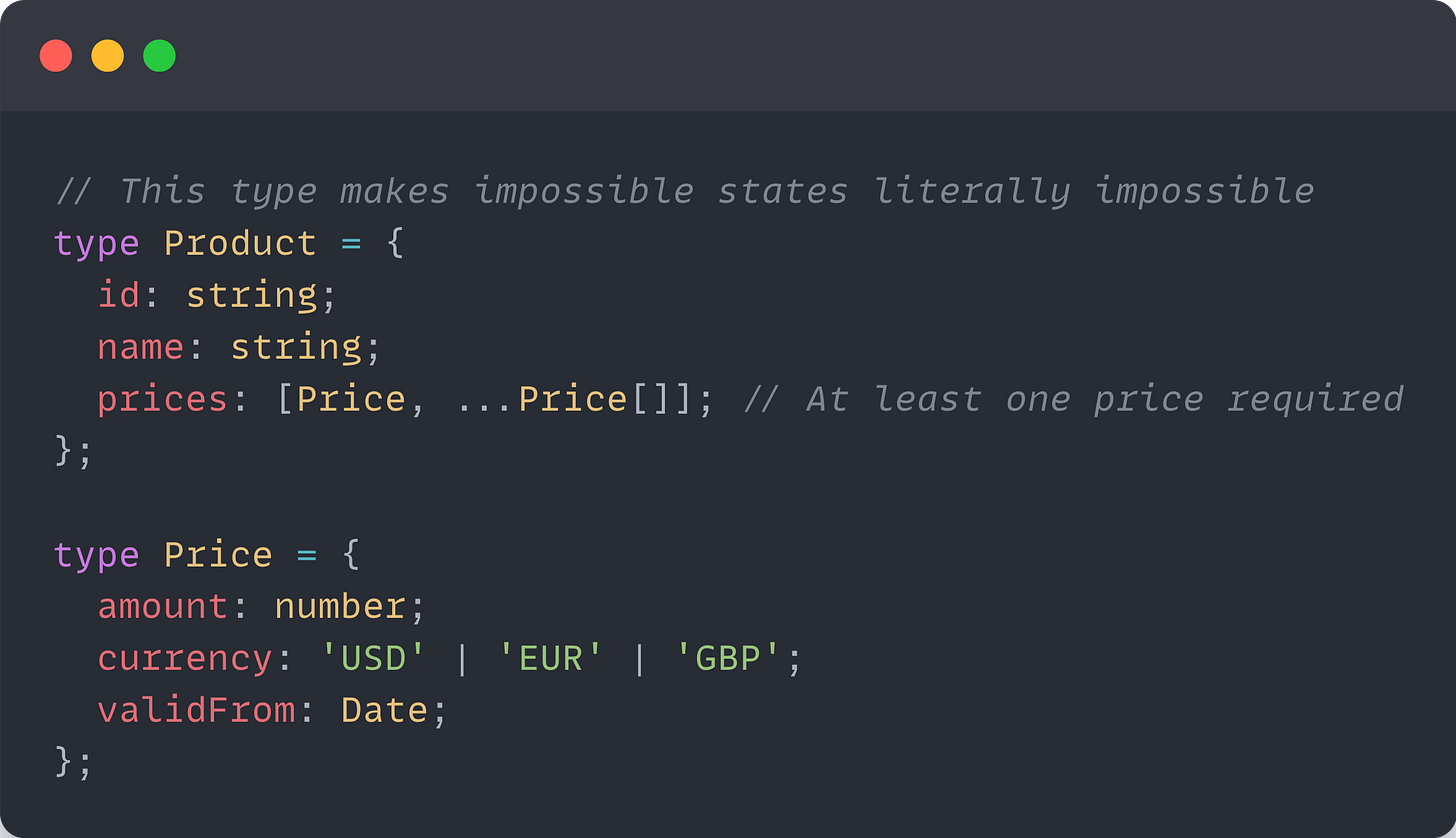Why You Can't Afford to Ignore TypeScript? 🌟
We ship faster when we break fewer things. TypeScript helps you do that. (4 min)
When I see people who are not sold on TypeScript, I show them code like this:
The moment you reference a property from an object, you are using a type.
You rely on the object to have a specific structure.
It’s better to make it obvious and describe it.
Yes, writing TypeScript takes a bit more effort, but that work pays off in the future, especially with the maturity of the project.
Remember: We ship faster when we break fewer things. TypeScript helps you do that.
In today’s article, I’d outline several benefits of why you have to use TypeScript in your projects.
CodeRabbit: Cut Code Review Time & Bugs in Half - Sponsor
Code reviews are critical but time-consuming. CodeRabbit acts as your AI co-pilot, providing instant Code review comments and potential impacts of every pull request.
Beyond just flagging issues, CodeRabbit provides one-click fix suggestions and lets you define custom code quality rules using AST Grep patterns, catching subtle issues that traditional static analysis tools might miss.
CodeRabbit has so far reviewed more than 10 million PRs, installed on 1 million repositories, and used by 70 thousand Open-source projects. CodeRabbit is free for all open-source repos.
1. Design Better Systems with Type-Driven Development
A good way to use TypeScript is to start by defining your domain types, not implementation.
When you describe your data in your system clearly, you can see gaps in your understanding before writing any logic.
This is the so-called “type-driven development” where you start with the types, which makes the blueprint of the feature.
For example, imagine a Product type that requires at least one price.
With this structure, you can’t create a Product without a price.
By outlining that with types, we make illegal states unrepresentable, removing an entire set of bugs.
Those types also serve as a living documentation and source of truth of the current system’s state.
2. Productivity Benefits: Auto-Completion & Error Detection
TypeScript’s compiler and IDE support give you immediate feedback.
If you mistype a property or call a method with the wrong type, the editor warns you before you hit “run”.
Optional properties and return types are checked too.
For example, if a function is supposed to return a string but may return undefined, the compiler points that out.
This kind of feedback reduces the time spent debugging and hunting down runtime errors.
Another great advantage is the auto-completion.
Because your editor knows the types of your variables, it can suggest valid methods and properties.
This significantly improves the Developer Experience, speeding up the coding process.
3. Long-Term Code Quality And Team Benefits
Large codebases and growing teams amplify the cost of mistakes.
TypeScript acts as a safety net that scales with your organization.
When you change a contract, TypeScript highlights every place you need to update.
When LinkedIn evaluated TypeScript adoption, they found that even a small conversion would catch about a quarter of all the JavaScript errors in their apps.
TypeScript makes implicit contracts explicit:
Function signatures document expected inputs and outputs
Interface changes highlight all affected code
Refactoring becomes mechanical rather than error-prone
Clear type information makes code easier to understand, navigate, maintain, and debug.
This increases the capacity to add new features and fix bugs.
In short, investing in types now pays off through faster development later.
4. Trade-Offs And Downsides
Using TypeScript does add complexity.
You have to learn the syntax, maintain type definitions, and configure a tsconfig file.
There are also some packages that lack good types.
In recent years, however, tooling and package support have improved tremendously.
Most developers can rely on type inference instead of writing complex generic types.
You also don’t need 100% perfect types to get 99.9% of the value.
There are escape hatches, such as using any or unknown in a limited scope.
As long as you are careful, you can retain almost all the benefits while avoiding diminishing returns.
📌 TL;DR
TypeScript adds types to JavaScript, helping you catch mistakes before they reach your users.
Embrace “type-driven development” by outlining your types and data structures before writing any logic. This helps to reveal blind spots and misunderstandings.
TypeScript enables auto-completion and instant feedback, improving the Developer Experience and speeding up coding.
Better code quality and teamwork.
If the type system gets in your way, cheat by using any or unknown. It’s not necessary to have 100% perfect types.
Using TypeScript may slow you down now, but the investment is worth it. It results in cleaner, more reliable software that can evolve without chaos.
That's all for today. I hope this was helpful. ✌️
How Can I Help You Further?
Learn how to build clean, maintainable, and testable React Applications! 🚀
👋 Let’s connect
You can find me on LinkedIn, Twitter(X), Bluesky, or Threads.
I share daily practical tips to level up your skills and become a better engineer.
Thank you for being a great supporter, reader, and for your help in growing to 27.3K+ subscribers this week 🙏








It is astonishing to me that one has to try to convince people about the benefits of strongly typed languages.